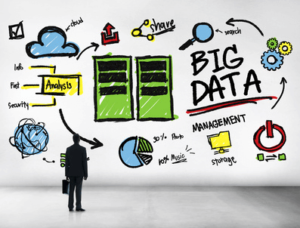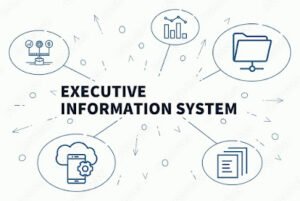Information Technology and Business
By Paribesh Sapkota
Business in the Information Age:
The United Nations Public Administration Network claims that the Information Age was created by taking use of breakthroughs in computer microminiaturization, which resulted in updated information and communication being used more widely in society and acting as a catalyst for social change.
The invention of personal computers coincided with the beginning of the Information Age, also known as the Computer Age, Digital Age, and New Media Age. Businesses that rely on digital information have grown to be significant and influential in a comparatively short amount of time.
Information in a computer is defined as data that is organized and structured and may be used to evaluate particular issues or make decisions. Information, to put it simply, is data that has been processed.
Characteristics of Information:
i) Accuracy:
- Accurate information is crucial for effective decision-making.
- It refers to the ratio of correct information to the total information gathered over a specific time period.
ii) Validity:
- Information should be generated from reliable and valid data.
- Validity ensures that the information contributes to trustworthy and effective decision-making.
iii) Completeness:
- Incomplete information is of little use in decision-making.
- Information must be comprehensive to contribute meaningfully to the decision-making process.
iv) Conciseness:
- Accurate information is focused and to the point.
- It avoids unnecessary details unrelated to the decision-making context.
v) Relevance:
- Information must be relevant to the topic or issue at hand.
- Unwanted details can lead to confusion and hinder effective decision-making.
vi) Timeliness:
- Timely information is critical for its relevance and impact.
- Delays in information delivery can render it less useful or even obsolete.
Vii) Reliability:
- Reliable information is authentic and trustworthy.
- Decision-makers rely on information that is consistently accurate and credible.
Information Systems:
“Information systems are combinations of hardware, software, and telecommunications networks that people build and use to collect, create, and distribute useful data, typically in organizational settings.”
2. Components of Information Systems:

– Computer Hardware:
Physical equipment used for input, output and processing. The hardware structure depends upon the type and size of the organization. It consists of an input and an output device, operating system, processor, and media devices. This also includes computer peripheral devices.
-Computer Software:
The programs/ application program used to control and coordinate the hardware components. It is used for analysing and processing of the data. These programs include a set of instruction used for processing information.
Software is further classified into 3 types:
- System Software
- Application Software
- Procedures
– Databases:
Data are the raw facts and figures that are unorganized that are later processed to generate information. Softwares are used for organizing and serving data to the user, managing physical storage of media and virtual resources. As the hardware can’t work without software the same as software needs data for processing. Data are managed using Database management system.
-Network:
- Networks resources refer to the telecommunication networks like the intranet, extranet and the internet.
- These resources facilitate the flow of information in the organization.
- Networks consists of both the physical devices such as networks cards, routers, hubs and cables and software such as operating systems, web servers, data servers and application servers.
- Telecommunications networks consist of computers, communications processors, and other devices interconnected by communications media and controlled by software.
- Networks include communication media, and Network Support.
– Human Resources:
It is associated with the manpower required to run and manage the system. People are the end user of the information system, end-user use information produced for their own purpose, the main purpose of the information system is to benefit the end user. The end user can be accountants, engineers, salespersons, customers, clerks, or managers etc. People are also responsible to develop and operate information systems. They include systems analysts, computer operators, programmers, and other clerical IS personnel, and managerial techniques.
Organization Structure and IT Support:
1. IT Departments:
– Organizations typically have IT departments responsible for managing technology resources.
– IT support functions include network administration, cybersecurity, helpdesk support, and software development.
2. Impact on Organizational Structure:
– IT influences organizational structures, promoting flatter hierarchies and cross-functional teams.
– Agile methodologies and collaborative tools contribute to more flexible and responsive structures.
Evolution and Types of Information Systems:
1. Evolution:
. Let’s elaborate on the stages of evolution:
1. Manual, Paper-Based Processes:
- Characteristics:
- Initially, business processes heavily relied on manual methods and paperwork.
- Information was stored in physical files, and data processing was labor-intensive.
2. Mainframes:
- Characteristics:
- Mainframes emerged as large, centralized computing systems in the mid-20th century.
- They were capable of handling complex calculations and supporting multiple users simultaneously.
- Mainframes were common in large organizations for tasks such as data processing and transaction handling.
3. Personal Computers:
- Characteristics:
- The advent of personal computers in the late 20th century brought computing power to individuals and smaller businesses.
- PCs revolutionized how people worked, allowing for decentralized computing and increased user autonomy.
4. Client-Server Architectures:
- Characteristics:
- Client-server architectures became prominent as a distributed computing model.
- The division of tasks between client (user interface) and server (data storage and processing) allowed for more efficient and scalable systems.
5. Cloud Computing:
- Characteristics:
- Cloud computing represents a paradigm shift where computing resources (e.g., storage, processing power) are provided as services over the internet.
- It offers scalability, flexibility, and cost-effectiveness by enabling on-demand access to a shared pool of resources.
Significance of Evolution:
- Increased Efficiency:
- Each stage of evolution brought about increased efficiency in data processing and management.
- Automation reduced manual efforts, allowing organizations to handle more data and tasks.
- Accessibility:
- Personal computers made computing power accessible to a broader audience.
- Client-server architectures and cloud computing further increased accessibility, allowing remote access to data and applications.
- Decentralization:
- The transition from mainframes to personal computers and distributed architectures led to decentralization of computing resources.
- This allowed for greater flexibility and adaptability in organizational processes.
- Scalability and Flexibility:
- Cloud computing introduced new levels of scalability and flexibility.
- Businesses could scale their IT infrastructure based on demand, reducing the need for large upfront investments.
- Enhanced Collaboration:
- Distributed systems facilitated collaboration among users across different locations.
- Cloud-based collaboration tools further improved communication and teamwork.
- Digital Transformation:
- The evolution reflects a broader digital transformation, where technology becomes integral to organizational processes, decision-making, and innovation.
2. Types of Information Systems:


DISADVANTAGES:

- A decision support system increases the speed and efficiency of decision-making activities. It is possible, as a DSS can collect and analyze real-time data. It promotes training within the organization, as specific skills must be developed to implement and run a DSS within an organization.
- It automates monotonous managerial processes, which means more of the manager’s time can be spent on decision-making
- It improves interpersonal communication within the organization.
Disadvantages of a Decision Support System
- The cost to develop and implement a DSS is a huge capital investment, which makes it less accessible to smaller organizations.
- A company can develop a dependence on a DSS, as it is integrated into daily decision-making processes to improve efficiency and speed. However, managers tend to rely on the system too much, which takes away the subjectivity aspect of decision-making.
- A DSS may lead to information overload because an information system tends to consider all aspects of a problem. It creates a dilemma for end-users, as they are left with multiple choices.
- Implementation of a DSS can cause fear and backlash from lower-level employees. It is because many of them are not comfortable with new technology and are afraid of losing their jobs to technology.

- Advantages of Executive Information System (EIS)
- It has trends analysis capability.
- Enhances the manager’s leadership skills.
- Helps in better personal thinking and decision making.
- Leads to a better reporting system,
- Helps executives to get a better mental model of business.
- Adds to the efficiency, timeliness, and accuracy of office automation.
- Provides better understanding of enterprise operations.
- Increases productivity by helping time and team coordination,
- Capacity and quality of communication is increased.
Disadvantages of Executive Information System
- Its functions are limited, as it cannot perform complex calculations.
- It is difficult to quantify the advantages and justify its implementation.
- Information overload is encountered by executives.
- Systems are prone to become slow, large and hard to manage.
- Keeping recent data is tough.
IT for Business:
1. Strategic Role:
– IT plays a strategic role in business by enabling innovation, improving efficiency, and supporting strategic decision-making.
– Technologies like AI, big data analytics, and IoT contribute to business growth.
2. E-Commerce and Online Presence:
– E-commerce platforms and online marketing have become essential for businesses to reach a wider audience.
– Online presence is crucial for customer engagement and brand visibility.
IT for Individuals:
1. Personal Computing:
– Personal computers have revolutionized how individuals work, communicate, and access information.
– Laptops, tablets, and smartphones are common personal computing devices.
2. Mobile Technology:
– Mobile devices and apps provide individuals with instant access to information, services, and social networks.
– Mobile technology has transformed communication and lifestyle.
Computers in the Past and Present:
1. Historical Context:
– Early computers were large, expensive, and limited in processing power.
– Mainframes were prominent, and accessibility was restricted.
2. Present-Day Computing:
– Modern computers are powerful, compact, and widely accessible.
– Cloud computing and edge computing have further expanded computing capabilities.
– Advances in hardware and software continue to drive innovation.
In summary, the Information Age has reshaped the business landscape, with technology influencing organizational structures, information systems evolving, and IT playing a pivotal role in both business and individual contexts. The continuous evolution of computing technologies has brought about transformative changes in how information is processed, shared, and utilized.